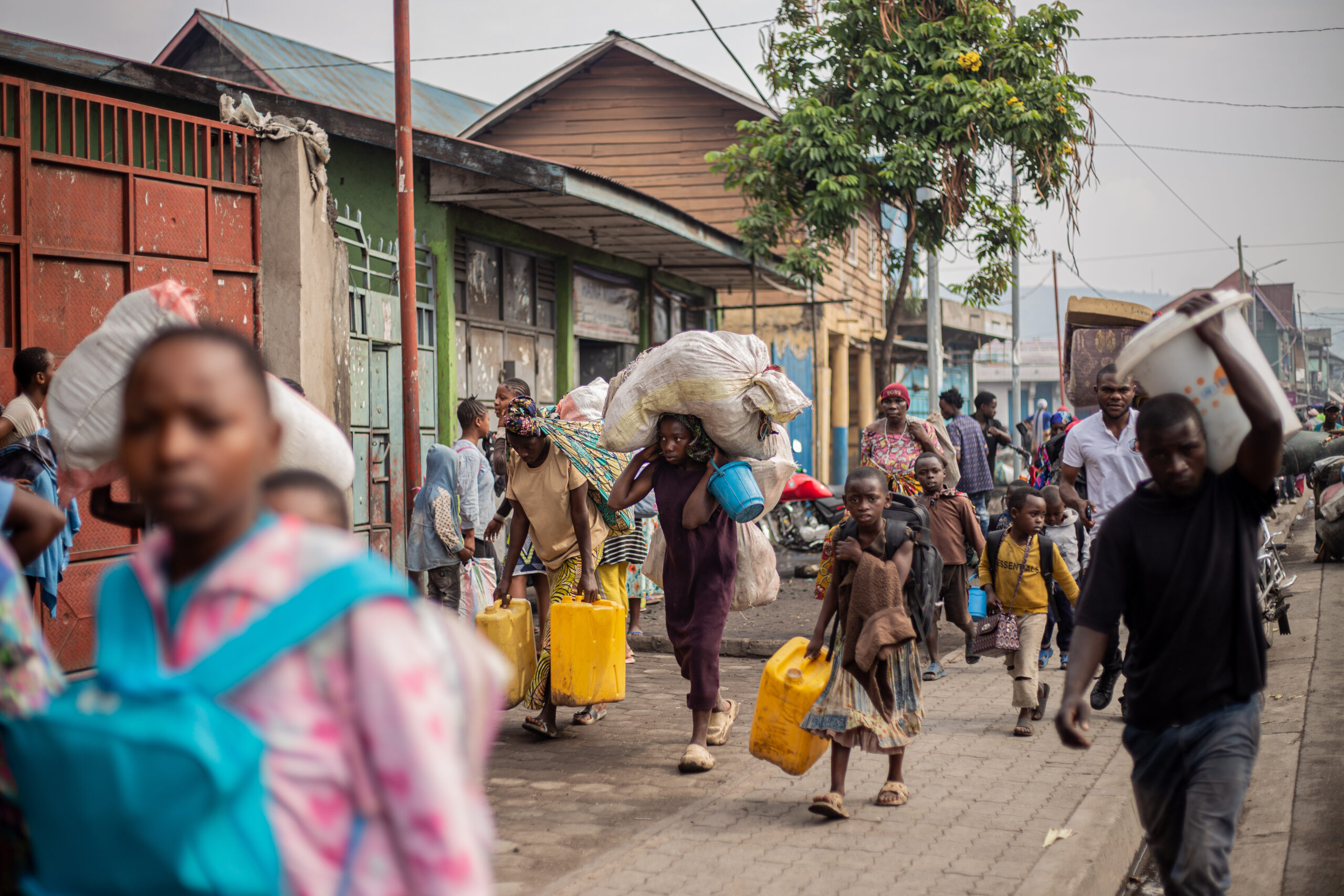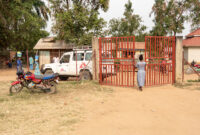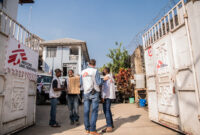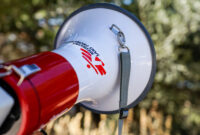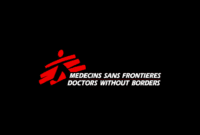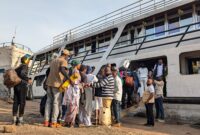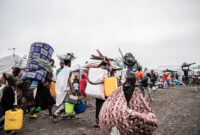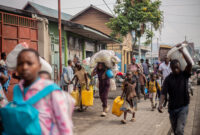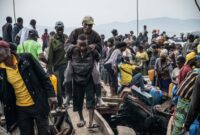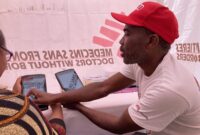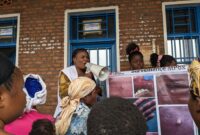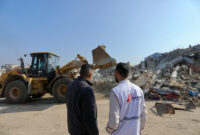Democratic Republic of Congo: In Goma, a chaotic situation, many people war-wounded
This week, the fighting between M23, the Congolese army and their respective allies reached the city centre of Goma, Democratic Republic of Congo (DRC). Doctors Without Borders/Médecins Sans Frontières (MSF) teams have reoriented part of their activities to respond to emergency needs, such as caring for people who are wounded. Virginie Napolitano, MSF emergency coordinator in Goma, describes the situation in the city.
Virginie Napolitano
This week, the situation was very chaotic. At the beginning, there were clashes with artillery. We also heard a lot of gunshots crackling in the city, very close to homes and our workplaces. When we finally managed to go out for our work, we saw military uniforms lying around in the streets, as well as many gun shells. There were also a lot of weapons in the streets, some of which were recovered by people or armed groups.
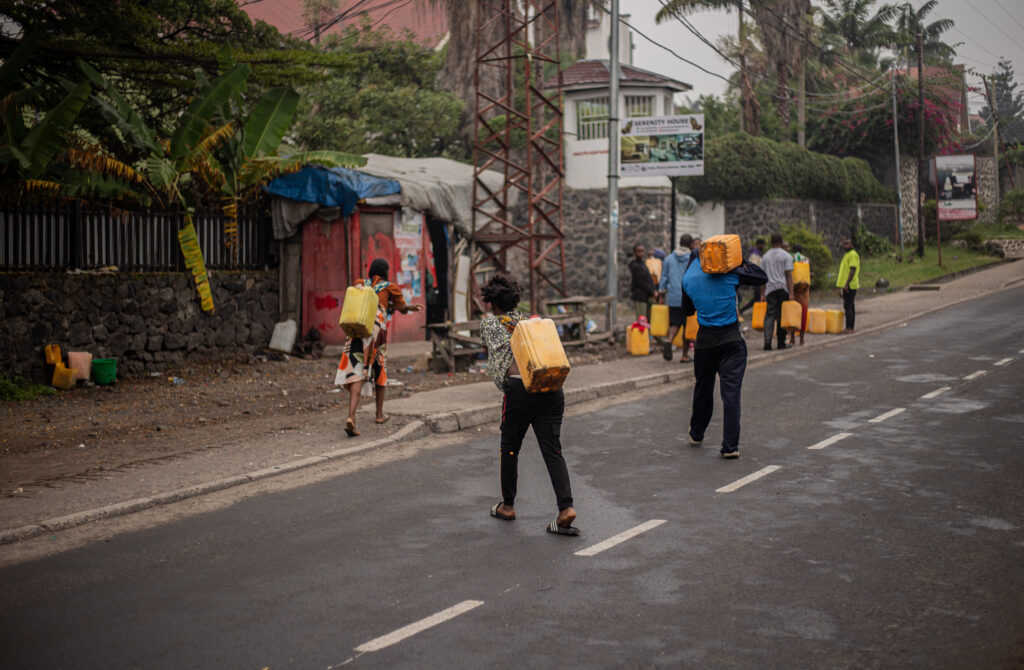
We know there has been a lot of looting in the city. Many stocks of international organizations have been affected, including those of MSF. They contained humanitarian supplies, such as medicines, which allow nongovernmental organizations to work, particularly in camps for people who are displaced. Most humanitarian organizations can no longer work.
Chaotic situation
Goma has some two million inhabitants, now adding more than 650,000 people displaced by the fighting in recent months or years, who live near the city, in unsanitary camps. MSF only has a very small stock of medicines and has stopped intervening in these camps for the time being, even though we were able to go there on Thursday. Some of the MSF teams have managed to make donations to hospitals, including donating medical care kits, fuel and water to Virunga General Referral hospital in Goma.
For almost a week, the electricity was completely cut off in the city, which added to the general chaos. Goma was cut off from the world, it was a total blackout. The water was also cut off and until now many people do not have access to drinking water. The inhabitants of Goma and the displaced people who have joined the city to flee the fighting are forced to go to Lake Kivu to fill water cans. Fortunately, the National Red Cross is on site. Their work allows people to chlorinate their water cans to prevent the spread of water-borne diseases, such as cholera. Despite these interventions, on Jan. 30, we learned several cases of cholera had been reported in Goma. MSF teams are starting to work in support of the treatment of people suffering from this disease as well as on water and sanitation in the city.
This was the first day the fighting had eased. This allowed the wounded, who had stayed at home and could not access care, to go to a hospital.
Before the fighting broke out in the city, MSF teams were working in Kyeshero hospital, located in the western part of the city, in support of the Ministry of Health. They were providing care for malnourished children; most of whom came from the camps for people who were displaced near the city. We quickly put in place a plan for a mass influx of wounded, in particular to support the International Commitee of the Red Cross’s (ICRC) work in Ndosho hospital. The hospital is overwhelmed by the number of people who are wounded and need to be treated.
As early as Jan. 23, the first wounded began to arrive at the hospital or to be transferred to us by the ICRC. In one day alone, Jan. 29, we received nearly 140 wounded at the hospital triage, many of whom were hospitalized. This was the first day that the fighting had eased. This allowed people who were wounded and had stayed at home and could not access care to go to a hospital.
At the beginning of the M23 offensive on Goma, we received patients who were mostly injured by shrapnel. Recently, the patients we treated were mainly wounded by bullets, including civilians hit by stray bullets. These are often people who were close to the fighting and were unable to protect themselves, or people who were injured while they were at home. The bullets went through the wooden walls of their houses. We have also received people who were taking part in the fighting, soldiers or their allies.
Currently, the morgue at Kyeshero hospital is overflowing with bodies. There are nearly 40 of them, most of which are unidentified. We are in discussions with the Ministry of Health to try to organize dignified burials for these people. The morgues at other hospitals in Goma are also overwhelmed. We also know the collection of bodies is not finished and the Red Cross and civil protection continue this work. The death toll can only be made when the clashes and urban violence have completely ceased and the work carried out by the Red Cross is finished.
Our activities were heavily affected because we were unable to move around and bring medical equipment, medicines and food for patients.
People who are war-wounded
Kyeshero hospital is overwhelmed by the number of wounded, even though the MSF teams and those from the Ministry of Health are doing their best. They were used to treating malnourished children and after the implementation of the plan for the mass influx of wounded, found themselves treating war-wounded. In this hospital, we lack medicines but also staff, particularly those specializing in surgery.
Some of the hospital staff were unable to come to work because of the fighting in the city. Those who had already been there since Sunday provided all the treatment by staying there for four days in a row, without being able to sleep properly. Our activities were heavily affected because we were unable to move around and bring medical equipment, medicines and food for patients.
The most urgent thing for MSF is to be able to replenish our stocks of medical equipment and medicines as quickly as possible, and to bring in specialized staff, particularly to increase surgical care. A surgeon and an anesthesiologist should arrive in Kyeshero on Jan. 31, which would allow us to increase treatment capacities.
On Jan. 30, we managed to go to some displaced persons’ camps located to the west of the city. The situations are quite different in these camps, but in the Kashaka camp, people were worried, particularly following the numerous lootings in the city.
On the other hand, this chaotic situation adds to the trauma of their displacement, since they had already fled the fighting between M23, the Congolese army and their respective allies. Displaced people no longer feel safe. Some have started to dismantle their shelters and leave the camps in the hope of finding some safety elsewhere. Those who remain are wondering whether they will be able to, or will be forced to by armed groups, return home.
